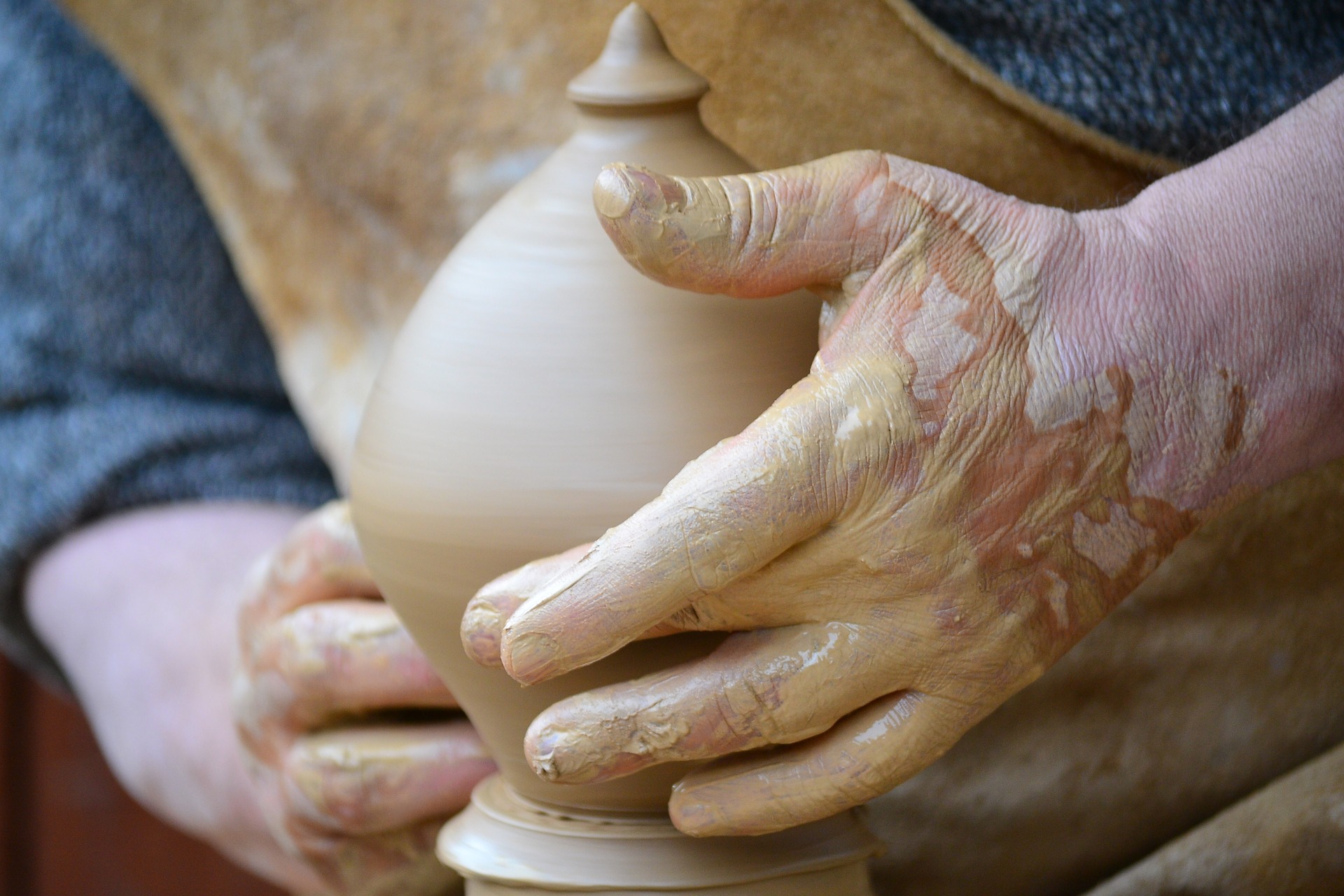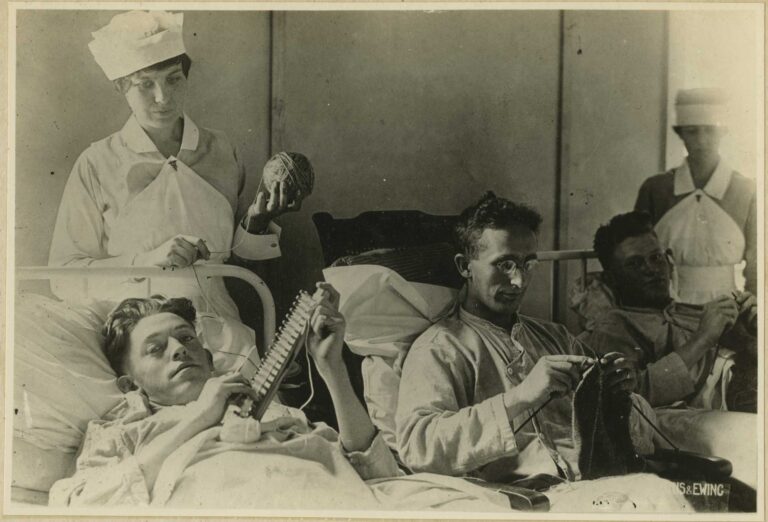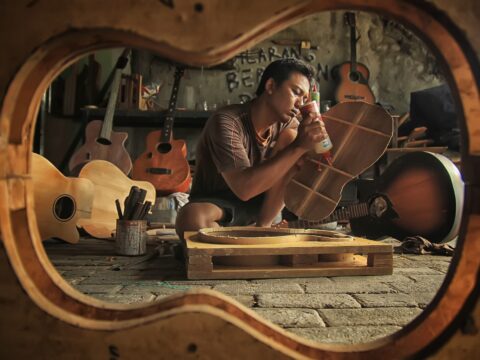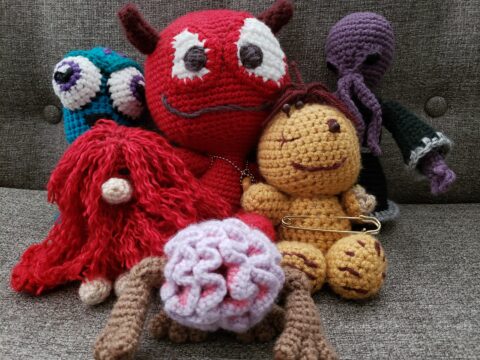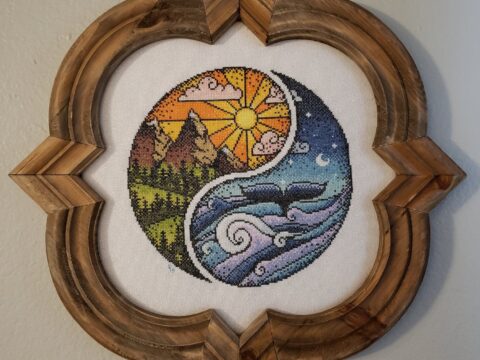You may be surprised at the presence of crafting on a geek blog.
For many of us, crafting is at the center of how we celebrate our geek. From cosplay to leatherwork to fiber arts, the geek community is full of creative and passionate people.
We want to celebrate those people. We’ll introduce you to talented artists who will share their tricks of the trade, challenges, and victories. Maybe you’ll decide to pick up a new hobby or learn more about a craft you already love. But first, I want to talk about the benefits of crafting and why we craft.
Crafting as Connection
It was my Granny, my mom’s mother, that taught me how to crochet and cross-stitch during long, hot summers in AZ. I think of her whenever I pick up a hook or smoosh some yarn.
My link to my mother is particularly strong when I craft as well—she always had craft supplies and plenty of encouragement and knowledge to guide me along. She was able to build on and refine what Granny taught me.
Beyond connecting me to my history, crafting has connected me to local and world-wide communities—to my fandom family. Today, we have many ways to connect with fellow crafters.
Facebook Groups
From cosplay to bio-active vivariums, hobby groups make up a significant amount of Facebook interactions.
There are tens of millions of active groups currently on Facebook, with more than 400 million users belonging to groups that are a meaningful part of their lives.
In a group, you can surround yourself with people who share your geek. You can ask questions, offer advice, stay informed on innovations, and just enjoy the company of others like yourself.
I’m in at least one group for every interest I have. Usually more. In fact, I’m even in VIP groups and sub-groups, helping me explore every corner of my crafting worlds. In fact, if you’re a #critter, you’ll be glad to know that we’ve got our own craft group on Facebook: Gilmore’s Glorious Goods!
Crafting groups are a great way to make connections.
Full of visual goodness, Instagram allows you to connect directly to makers, designers, and icons regardless of your fandom family.
Show off what you’ve made, chat privately and in groups, and follow specific hashtags that keep your interests right up front. (You can even follow Geek Travel Guide. Make sure to search #GeekTravelGuide and #GitGets for more of our geeky goodness.)
Your Local “X” Store
Regardless of whether you cross-stitch, sew, work leather, or craft for cosplay, you likely have a local store that provides you with what you need. They’re often staffed by those that share your passions and who are knowledgeable about it. A great place for supplies, inspiration, and advice, your local store can also be a great way to connect with crafters like yourself. Many stores host get-togethers on a recurring basis. If they don’t, you could tap into your geek-leader abilities and take the opportunity to start one yourself.
Creative Websites
Stitchingly and ravelry are websites catering to fiber artists. Both allow us to share and organize our projects and crafting tools. They also make it easy to find new projects.
ravelry is chock full of inspiration. With both knit and crochet projects, a library for your patterns, forums and a plethora of groups, you’ll find inspiration, ideas, and camaraderie. The groups alone make the site valuable. You can join groups for specific designers, project types, knitting or crocheting techniques and styles, and location-based groups, as well. The site’s interface makes it easy to find swaps and -alongs (knit-alongs and crochet-alongs) as well. An “-along” is when people stitch the same pattern (or related patterns) during the same time period and participate in it together despite being in far-flung locations.
Stitchingly is newer to the scene and was made for cross-stitchers. It already has a robust toolset to track your projects and share them with the community. You can also browse what others are working on, find designer information, and participate in their stitch-alongs (SALs). Coded by a fellow stitcher, you’ll always find something fun and new.
Bluprint (once Craftsy) is a multi-craftual site that acts as classroom, pattern/instruction market, and supply store. Interested in woodworking? They’ve got videos for you. Baking? Drawing? They can help you with recipes, how-to videos, and tools.
We can’t fail to mention Pinterest. Everybody’s favorite collecting website offers more than just pretty pictures. A search there for inspiration, instruction, or advice may easily lose you hours of crafting time.
Which sites do you use for your crafting?
Youtube
Creatives have found a welcome place on YouTube, as well. Cross-stitchers share their projects on Flosstube, and even have “stitch with me” videos intended to feel like you’re sitting and stitching with them. They share their progress and any purchases they might have made, making friends and connections worldwide.
Crochet and knitting have similar niches: yarntube and podcasts filmed and released on YouTube. Book fans will be excited to know that booktube is also a thing.
Tutorials for everything from jewelry making to leatherworking, building and growing bioactive vivariums to everything you need to know to cosplay can be found on YouTube, along with the opportunity to connect with the creators and the community they’re building.
Crafting as Therapy
Many of my crafting friends use their stitching, woodworking, and drawing as therapy. I’ve heard over and over how such-and-such project helped them through bouts of depression or anxiety.* Crafting got me through my grief after my father passed away.
So we know, through empirical evidence, that crafting helps. What about something a bit more scientific?
Crafting was used for diversion and occupational therapy on “shell shocked” soldiers after World War I, not only as a way to cope, but in an effort to prepare them for occupations after the war. Many studies have been aimed at the benefits of knitting on mental well-being. Even oncology nurses feeling job stress and compassion fatigue can benefit from the fiber arts.
“There’s promising evidence coming out to support what a lot of crafters have known anecdotally for quite some time,” Catherine Carey Levisay, a clinical neuropsychologist and wife of Craftsy.com CEO John Levisay, tells CNN. “And that’s that creating — whether it be through art, music, cooking, quilting, sewing, drawing, photography (or) cake decorating — is beneficial to us in a number of important ways.”
So, next time you feel a little stressed, grab your Sculpey, crochet hook, or paint-by-numbers kit and do some self-therapy.
(We do not mean to suggest that crafting can (or should) take the place of a doctor’s care. If you think you are experiencing depression, please seek out the assistance of a doctor or therapist. This article is not intended as medical advice.)
Crafting as Income
Humans, as a species, are creative. If we can figure out how to make something, we will. But one thing most geek hobbies have in common is they all require money. When it comes to crafting, we need tools, supplies, and instructions – just to start.
Sites like Etsy, Bluprint, CreativeBug, Skillshare, Zazzle, and many others, have opened up an entirely new cottage industry of crafters. No longer are we limited to setting up a table at a local craft fair – we can sell to the world if we want to. And, even if you don’t get rich off your endeavors, you may find your side gig helps to pay for your hobby.
Selling your own goods can be a challenging, time-consuming endeavor. Even writing product descriptions to get seen by the search engines on sites like Etsy requires some specialized knowledge. But if you want to share your creations with a larger audience, while possibly earning some money, you may find turning your crafting into a side gig very satisfying.
On the other hand, you may not want to start thinking of your beloved hobby as “work.” That’s okay, too. You can always go back to crafting for yourself and close friends.
But if you’re looking to share your talent with others while generating some side cash, the growing gig economy gives you the opportunity.
Do you craft? Is your hobby a side gig? What sites do you use to help you create?

